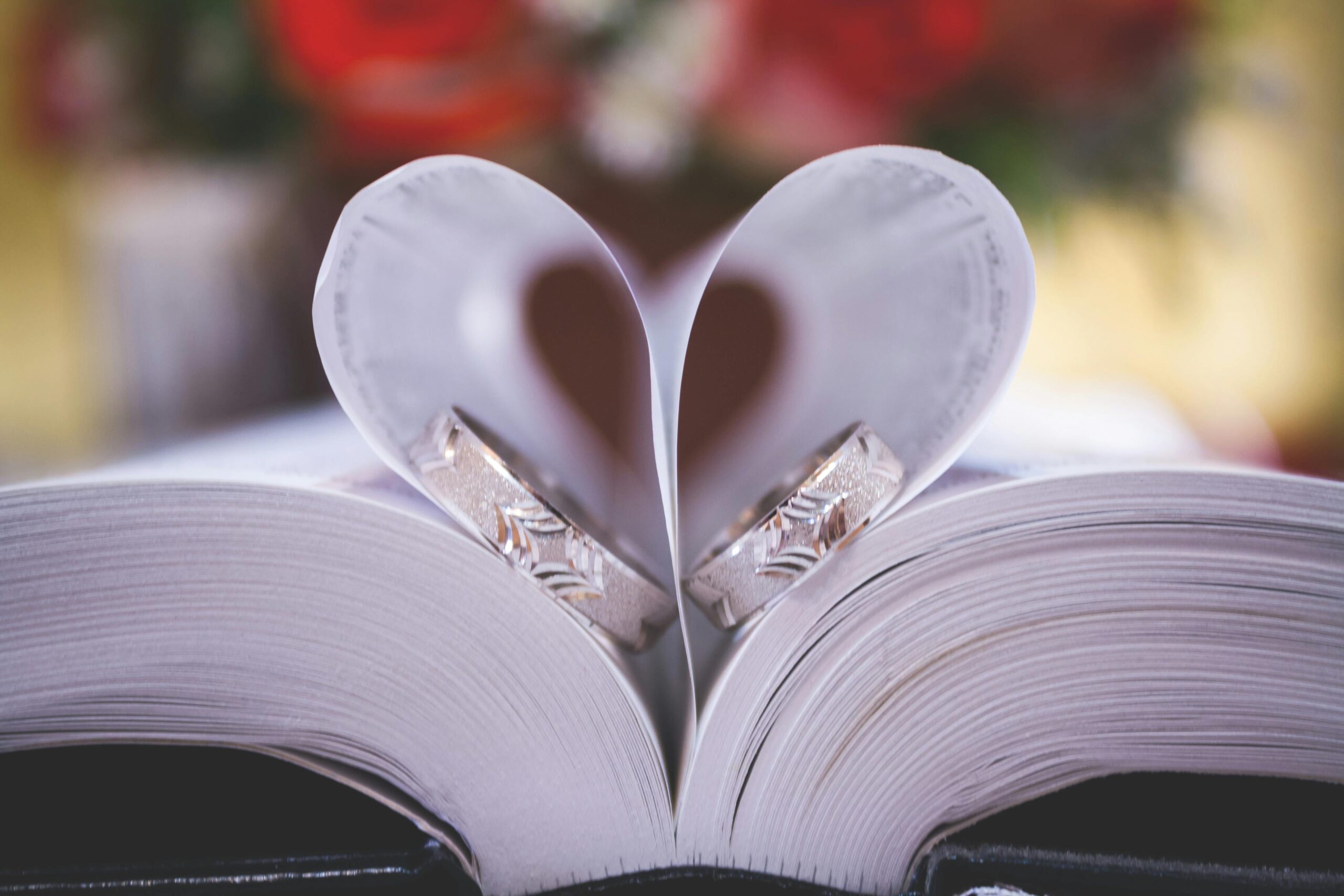
Wedding rings are a well-known and universal symbol of love and commitment, deeply rooted in history and tradition. The common practice of exchanging rings during wedding ceremonies spans centuries and cultures, representing an unbroken circle of eternal love. This article explores the rich history of wedding rings, tracing their origins and evolution through time.
Ancient Beginnings
Ancient Egypt
The earliest proof of wedding rings dates back to ancient Egypt, around 3000 BCE. Egyptians believed that circles symbolized eternity, a notion reflected in their ring design. Rings were made from braided reeds, hemp, and other natural materials. The Egyptians also believed that the vein in the fourth finger on the left hand, the “vena amoris” or “vein of love,” was connected to the heart, making it the ideal place to wear a wedding ring.
Ancient Rome
The tradition of wedding rings was adopted by the Romans, who used more durable materials such as iron and bronze. Roman rings often featured intricate designs, including clasped hands, which symbolized the union of two people. The Romans popularized the practice of wearing the ring on the fourth finger of the left hand, a tradition that still continues today.
Ancient Greece
In ancient Greece, wedding rings were initially worn on the right hand, as the left hand was considered unlucky. Greek rings often depicted Eros or Cupid, the gods of love, and were made from various materials, including gold and silver.
Medieval and Renaissance Europe
The Middle Ages
During the Middle Ages, wedding rings became more elaborate, often adorned with gemstones. The diamond, believed to bring strength and clarity, became particularly popular. The use of gold increased during this period, symbolizing wealth and eternal love. Rings were also inscribed with romantic phrases and the couple’s initials.
Renaissance
The Renaissance period saw the introduction of the gimmel ring, a type of puzzle ring composed of two or more interlocking bands. During the engagement, the couple would wear the separate bands, and during the wedding ceremony, the bands would be united into a single ring. Posy rings, inscribed with short poems or romantic messages, also became popular during this time.
Modern Era
19th Century
The 19th century brought significant changes to wedding ring traditions. The Victorian era, known for its romanticism, saw rings adorned with hearts, flowers, and other sentimental motifs. The discovery of diamond mines in South Africa in the late 1800s made diamonds more accessible, solidifying their status as the preferred gemstone for engagement and wedding rings.
20th Century
The 20th century revolutionized the wedding ring industry. In 1947, De Beers’ marketing campaign introduced the famous slogan “A diamond is forever,” cementing the diamond engagement ring as a cultural norm. Platinum, known for its durability and rarity, became a popular choice for wedding bands.
Contemporary Trends
Today, wedding rings come in various styles, materials, and designs, reflecting personal tastes and cultural influences. While traditional gold and diamond rings remain popular, many couples opt for alternative metals like titanium, tungsten, and rose gold.
Customization has become a significant trend, with couples choosing unique engravings, mixed metals, and non-traditional gemstones. What’s more, bespoke rings are becoming more popular, as they clearly reflect the sentiment between the couple. Jewelers like chapter79.co.uk are the go-to place to discuss your personalized designs.
Conclusion
The history of wedding rings is a testament to their enduring significance as symbols of love and commitment. From ancient Egypt to modern times, the tradition of exchanging rings has evolved, reflecting cultural, social, and technological changes. Despite these changes, the core meaning of the wedding ring remains unchanged: a timeless symbol of eternal love and unity.

